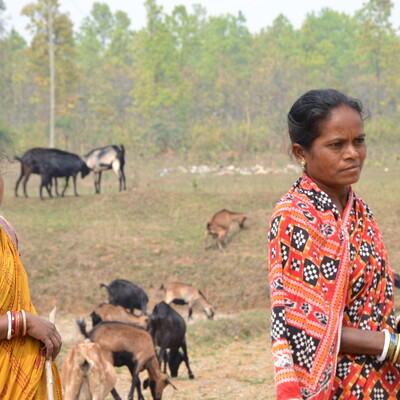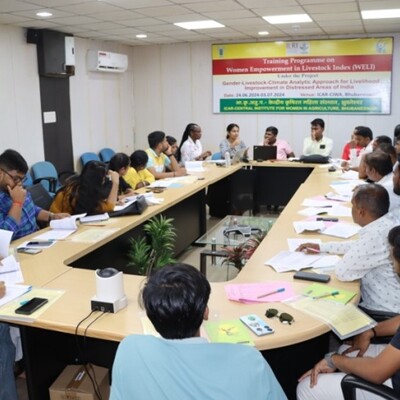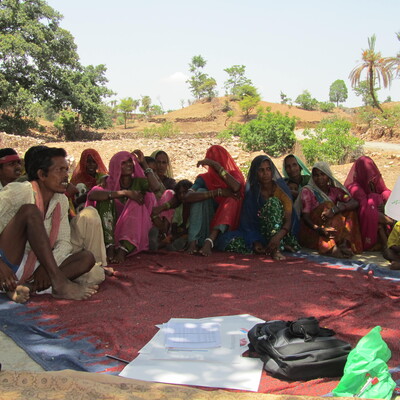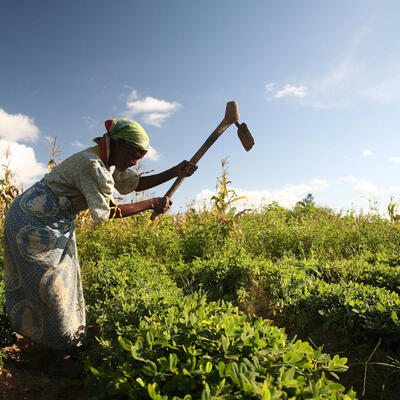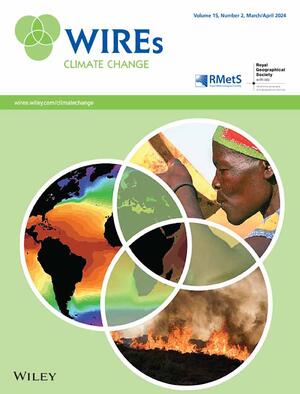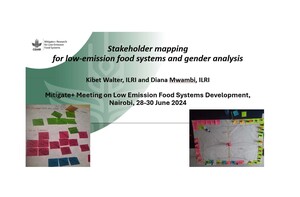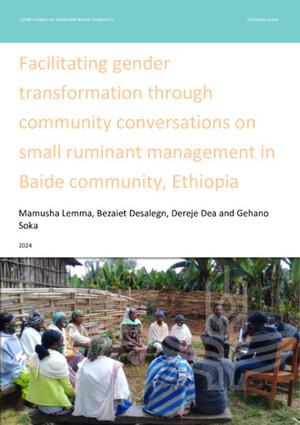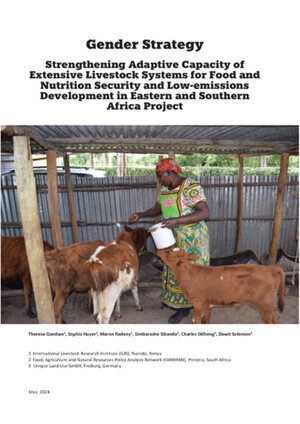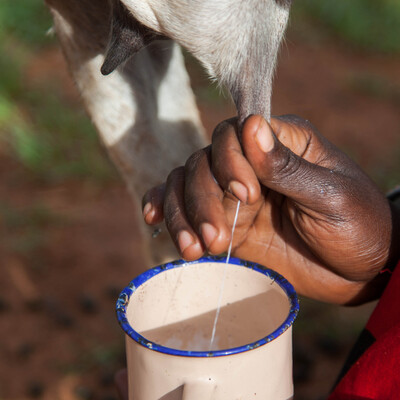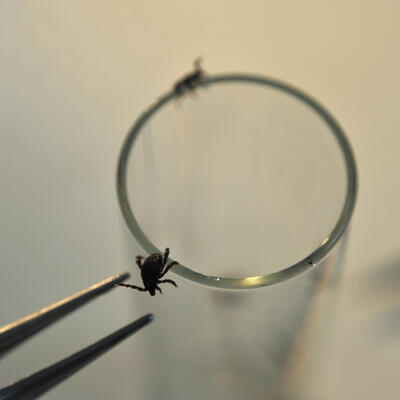
Meet scientists in ILRI’s Livelihoods, Gender and Impact Program: Kathy Colverson
As we approach International Women’s Day, commemorated on 8th March 2014, each week on this blog we will meet gender scientists working in the Livelihoods, Gender, Impact and Innovations Program at ILRI. This week, we meet Kathleen Earl Colverson, a senior gender scientist in the program, with more than twenty years’ experience in gender research. Colverson emphasizes that “there can be no success in agricultural research for development without considering the whole farming system, in which gender is a critical component”.
Did you always want to be a gender scientist?
No, my bachelor’s degree is in zoology, with a Master’s degree in Animal Nutrition, and I was interested in becoming a veterinarian. I grew up on a farm so I would spend a lot of time with livestock. I was a university professor for almost fifteen years teaching animal science and livestock management when I started to do international development work. This was back in the early 1990’s and I became interested in gender issues while doing the development work. I was not only engaged in the technical work of animal science, but I was looking at farming systems, which was a very popular topic at that time, and I particularly got interested in what the women were doing as farmers. As a result, I shifted my professional interests from exclusively working in technical topics related to animal science, to looking at what the entire farming system was doing, and the variables involved in farming systems related to adoption of practices and technologies. When I began a PhD, instead of working on a technical area, I opted to pursue a much broader more interdisciplinary focus in adult education and extension with a specialization in gender and development. During field work, I spent a year living in Central America in Honduras working with women farmers, which was the turning point when I decided it was the area I really wanted to work in and changed my whole profession.
For how long have you been in this field?
Almost twenty five years now, working in areas related to gender and agriculture.
What is your main interest in this area of gender and development?
I am particularly interested in how we build capacity of not only women farmers, but also the capacity of organizations to understand the importance of analyzing gender issues. It is critical to explore ways we can work with male professionals, particularly extension and research scientists, to help them understand why gender is important and how they can modify their work to integrate gender more intentionally in the more technical and biophysical sciences.
Why is gender so important?
Gender is important because you cannot have sustainable success in research for development, without considering the whole farming system, and gender is a piece of that system. You have to analyze social structures, social norms, who are your end users, and how are they going benefit or not benefit from the technologies that are being introduced. This is particularly important from a gender perspective because technological interventions affect women and men differently. Gender differences also affect the access and control of resources in the agricultural value chain. Therefore it is critical for the success and ultimate adoption of technologies, to consider gender.
What is your experience in this field of gender research in terms of how much has been achieved?
Those of us who have been working in this field more than twenty years, ask ourselves that question quite often ‘have we seen changes and any technology adoptions related to gender issues?’ There has been a renewed interest in gender and development issues over the past five to ten years. About 20-25 years ago there was a strong interest in gender (mid 1980s to early 1990s) and then the interest and funding support dropped off.
In the recent past, donors have woken up to the fact that gender is critical and there is a need to look at the complete social system to guarantee program impact. A great deal of research has been done showing that the vast majority of agricultural work (particularly at the production level) is done by women. If their involvement is not considered when analyzing the overall system, then the final technology introduction and adoption will not be successful. With the renewed interest with donors, we are seeing more mandates to incorporate serious gender analysis and impact assessment into projects and programs. However, one of the biggest challenges we have now in the gender field, is there are very few people trained on how to analyze gender, and create gender action plans that will result in significant impact. That is why one of my other goals (aside from building gender capacity with organizations) is to mentor and build capacity of young gender scientists both male and female.
You say there was a period where there was lapse in gender emphasis, and not really much achieved in this field, do you know why?
No significant funds were being dedicated to gender research. There was tremendous effort placed on issues around food security, but without examination of the gendered component. Without looking at that aspect, and the fact that women are the primary producers, purchasers and the caretakers of food preparation and consumption in the family, you will not have success. Donors finally realized that gender must be considered when trying to solve food security issues. One of the most critical influencers in this regard has been Hilary Clinton who was the head of U.S. State Department, of which the United States Agency for International Development (USAID) is part. She mandated that gender analysis must be included in all USAID funded projects, and she pushed that agenda which had ripple effects in other organizations involved with USAID. These included the World Bank, the Food and Agriculture Organization of the United Nations (FAO) and additional large international agencies and non-governmental organizations. Currently you will see at least ‘lip service’ associated with gender, with some organizations beginning to take it very seriously.
You also mention the issue of critical mass and that the main challenge is that there are not enough skilled gender scientists. Having been a professor at the university and coming from an education background, are there courses that are tailored to address this?
There are very few. Recently I sent details to the gender working group about some of these courses. One such is an online course offered by Michigan State University associated with the Gender in Agriculture Source book by World Bank, FAO and the International Fund for Agricultural Development (IFAD) published about five years ago. They have produced an online course with modules associated with each of the chapters in the book. However, there are very few universities offering such courses. While teaching at the University of Florida (prior to joining ILRI) I taught a graduate level course on Gender and Agricultural Development, the first time the course had been taught in five years. It is one of the few courses on gender and agricultural research being taught in the world. Other universities may have Women’s Studies courses, but not necessarily gender and development within the agricultural context, which is a very rare combination.
You mention that capacity development is really at the heart of your concern, together with mentoring other gender scientists. What conscious efforts and steps do you think should be taken to address the gaps in this Community of Practice?
I recently published a gender training manual and I am trying to get it more widely distributed because it is a step-by step guide on how to integrate gender into more technical fields, particularly biological and agricultural sciences. I am also facilitating a number of international workshops, and training some of the younger gender scientists in facilitation. My goal is to “train the trainers” to expand the ripple effect. However, in the future, once I ‘retire,’ I want to do this kind of work more full time.
What is the biggest misconception about gender scientists?
I would say that the misperceptions that gender is only “women concerned about women’s issues” and predominantly around nutrition and reproductive health issues, are two of the most prevalent. These are unfortunately common, and a lot of the biophysical scientists do not think they need to be worried about integrating gender into their work because it is not relevant. One of the other issues is that people do not know how to engage men comfortably in discussing gender issues. This is another area I am interested in besides capacity building. How do we really mainstream gender in agriculture through existing channels that are predominantly male dominated? Helping men understand why gender is important, and how reflection on gender issues not only affects their professional lives, but also their personal lives, can make a big difference.
Having worked in diverse countries including China, India, Asia, North and Central America and now Africa, how would you say the gender issues vary across these different countries?
Gender issues are contextually specific, but there are some generic similarities and issues seen regardless of the country. First, women are generally not considered to be serious farmers. Farming for them is considered to be a hobby or contributing to household food security, hence women are marginalized in regards to their agricultural production activities.
Second, almost universally women have less access to resources; financial and micro-credit, inputs such as fertilizers, vaccines, etc. and there are various reasons for that. They also have less access to extension services because most of the extension agents are male, who generally do not believe women are farmers, and/ or work in cultures that prohibit men from talking to women. For example in the Middle East, women are not allowed to talk to men, and vice versa unless there are some intermediaries involved, which is a serious constraint related to sharing information.
Another issue is that women are frequently concentrated on the lower ends of the value chain. They are usually involved in production aspects, and moving up the value chain they lose access to not only resources but also control of income. There are exceptions, where you can see women engaged in more of the entire value chain, and retaining a greater portion of the income generated. For example, in Haiti where I worked briefly, one of my biggest surprises was that women not only produced, but actually controlled many aspects of the value chain all the way up to sales and income. This is because the culture in Haiti is predominantly matriarchal as opposed to patriarchal, and the gender dynamics are different than many other places in the world. I would like to study this more because I am very interested in knowing how the gender dynamics work in the agricultural value chains there. When we do gender research for Agricultural Research for Development (AR4D), we have to be cognisant of the cultural context because it influences everything within the country, and recognize that different communities in the same country may have their own variations.
What are some of the major research activities that you’ve been involved in and what would you say have been the highlights?
My research interest is primarily around capacity development, and what it takes to shape people’s behavior and attitudes towards gender. Some of the trainings that I have done around this have been successful. For example, I facilitated training in Tanzania where it was very encouraging to see one of the men who participated gradually change his attitude towards gender issues during the three-day training. At the end, he testified for the group, that it was best training he had ever attended, and now he understood why it is important to integrate gender into his work. In moments like that I feel like I have made a difference in someone’s life that has the potential for influencing a larger group of people. During the trainings we have three days of highly interactive exercises and presentations. But we also give a collection of all the resources and the training manual at the end of the training which they can use in the field.
One of my next goals is to follow up (six months on) to see how workshop participants use the skills they learned. There have not been sufficient resources to do this in the past. I have facilitated trainings in multiple countries where we have done pre and post workshop evaluations looking at gender knowledge before and after the workshop. This is an area I hope to pursue in the future to demonstrate impact.
What is in store this year for you?
We have a number of workshops scheduled around using, and refining the gender training manual. We will also create and conduct a gender capacity assessment of partners in at least four Livestock and Fish value chain countries (Uganda, Tanzania, Ethiopia and Nicaragua) with the Capacity Development department. The assessment will explore who are the Value Chain partners, what their gender capacities, and how we can help them address the gaps they have, as well as develop gender materials specifically to address those gaps. I am also hoping to expand the gender team at ILRI to acquire more gender scientists to address the requests from both the CGIAR Research Program on Livestock and Fish, as well as ILRI overall. We are planning to hire a post-doctoral scientist in India who will be dedicated specifically to examining gender and value chain work on a dairy co-operative run and owned by women. This would allow us to add yet another Value Chain country, (bringing the total five) and help continue refining and adding to the gender strategy.
Some final thoughts?
We need to have more resources and staff dedicated specifically to integrating gender research into the different thematic and research activities within ILRI and the other CGIAR centers. If we are going to mainstream gender throughout all of ILRI (Integrated Sciences as well as Biosciences) we must have the resources to do so. The gender team contributes regularly to bilateral proposal development, but it is extremely difficult to find specific funds dedicated just to gender. Most proposals have small percentages dedicated to gender, and one of my biggest challenges is to assemble sufficient funds to have significant impact. Many of the current gender scientists are fractionated into multiple projects and CGIAR Research Programs which makes it difficult for them to focus exclusively on the Value Chain country they are assigned to. We will continue to provide as much support as possible from our team to ILRI and the CGIAR, as they are all very dedicated professionals who are committed to making gender equity and equality a reality in their work.







